1926 ROLLS-ROYCE PHANTOM I SIX LIGHT LIMOUSINE COACHWORK BY COOPER OF PUTNEY Registration No. ON 9334 Chassis No. 71 TC Engine No. HO 35 Black over dark green with black wings, Bedford cord interior Engine: six cylinders in two blocks of three, overhead valves, 7,668cc; Gearbox: four speed manual; Suspension: semi-elliptic leaf springs to front beam axle, cantilever leaf springs to live rear axle; Brakes: servo-assisted four wheel drum. Right hand drive. In the uncertain luxury car market that Rolls-Royce faced after the Armistace that ended the Great War in 1918, they saw no need to hasten in to production with a successor to the well-loved Silver Ghost that had served so well since 1906. Indeed, annual poroduction of the type was greater between 1920 and 1924 than it had been before the war. The company took seven years to test and refine their new design and when it appeared in 1925, Rolls-Royce announced that in their view it was the most suitable type possible for the conditions of the time. Conveniently, the new car's chassis was quite like the Silver Ghost's, and the long stroke pushrod overhead valve six cylinder engine resembled that of the Rolls-Royce Twenty, but with twice the swept volume. The factory declined to state the engine's output, being content merely to inform its customers that power was one-third greater than that of the Silver Ghost. It offered a top speed of some 80mph, even when encumbered by with bulky formal coachwork, and this was matched by superb four-wheel servo-assisted brakes and surprisingly light steering. 71 TC was supplied new to an A.E. Burn of Dorridge, through G. Heath of Birmingham and equipped with an Open Touring Body by Davies & Hargreaves, who were presumably local coachbuilders. The car was sold to London, to a Terence Eden of South Kensington in November 1928, change of ownership is recorded to Mrs Eden, July 1930, it is believed that in around 1933 the Phantom gained the present bodywork by Cooper. A little known name in coachbuilding terms, Cooper who were initially based in Shepherds Bush moved to Putney in 1931. They specialised in purchasing unused bodywork and fitting them to Rolls-Royce, in many cases they converted Lagonda or Austin coachwork to fit small horsepower models, but with this car it seems likely that this bodywork came from a more renowned coachbuilder as its style is in keeping with vintage designs by Barker, or Park Ward. Certainly there are many similarities in the details of this car with the latter, including the windscreen, door hinges and rear 'D' Back. Mrs Eden appears to have taken the car with her when moving to Kingussie, Inverness-shire five years later. The Phantom has remained in Scotland since then, being acquired by A. Douglas Barr of the Isle of Eriska, Argyll in 1954, and passing to the present owner in 1975. When purchased, the vendor embarked on a thorough and sympathetic restoration, and although it has seen limited use since, it is expected to be driven to the auction. The coachwork finished in black over dark green livery is upholstered in Bedford cord to front and rear, and features hinged opening windscreen, sliding sunroof, nearside mounted spare wheel, and rear luggage rack. Brightwork fittings are all finished in nickel, and the only modification from vintage specification are the more modern wire wheels. A handsome and well-proportioned vintage Limousine.
1926 ROLLS-ROYCE PHANTOM I SIX LIGHT LIMOUSINE COACHWORK BY COOPER OF PUTNEY Registration No. ON 9334 Chassis No. 71 TC Engine No. HO 35 Black over dark green with black wings, Bedford cord interior Engine: six cylinders in two blocks of three, overhead valves, 7,668cc; Gearbox: four speed manual; Suspension: semi-elliptic leaf springs to front beam axle, cantilever leaf springs to live rear axle; Brakes: servo-assisted four wheel drum. Right hand drive. In the uncertain luxury car market that Rolls-Royce faced after the Armistace that ended the Great War in 1918, they saw no need to hasten in to production with a successor to the well-loved Silver Ghost that had served so well since 1906. Indeed, annual poroduction of the type was greater between 1920 and 1924 than it had been before the war. The company took seven years to test and refine their new design and when it appeared in 1925, Rolls-Royce announced that in their view it was the most suitable type possible for the conditions of the time. Conveniently, the new car's chassis was quite like the Silver Ghost's, and the long stroke pushrod overhead valve six cylinder engine resembled that of the Rolls-Royce Twenty, but with twice the swept volume. The factory declined to state the engine's output, being content merely to inform its customers that power was one-third greater than that of the Silver Ghost. It offered a top speed of some 80mph, even when encumbered by with bulky formal coachwork, and this was matched by superb four-wheel servo-assisted brakes and surprisingly light steering. 71 TC was supplied new to an A.E. Burn of Dorridge, through G. Heath of Birmingham and equipped with an Open Touring Body by Davies & Hargreaves, who were presumably local coachbuilders. The car was sold to London, to a Terence Eden of South Kensington in November 1928, change of ownership is recorded to Mrs Eden, July 1930, it is believed that in around 1933 the Phantom gained the present bodywork by Cooper. A little known name in coachbuilding terms, Cooper who were initially based in Shepherds Bush moved to Putney in 1931. They specialised in purchasing unused bodywork and fitting them to Rolls-Royce, in many cases they converted Lagonda or Austin coachwork to fit small horsepower models, but with this car it seems likely that this bodywork came from a more renowned coachbuilder as its style is in keeping with vintage designs by Barker, or Park Ward. Certainly there are many similarities in the details of this car with the latter, including the windscreen, door hinges and rear 'D' Back. Mrs Eden appears to have taken the car with her when moving to Kingussie, Inverness-shire five years later. The Phantom has remained in Scotland since then, being acquired by A. Douglas Barr of the Isle of Eriska, Argyll in 1954, and passing to the present owner in 1975. When purchased, the vendor embarked on a thorough and sympathetic restoration, and although it has seen limited use since, it is expected to be driven to the auction. The coachwork finished in black over dark green livery is upholstered in Bedford cord to front and rear, and features hinged opening windscreen, sliding sunroof, nearside mounted spare wheel, and rear luggage rack. Brightwork fittings are all finished in nickel, and the only modification from vintage specification are the more modern wire wheels. A handsome and well-proportioned vintage Limousine.
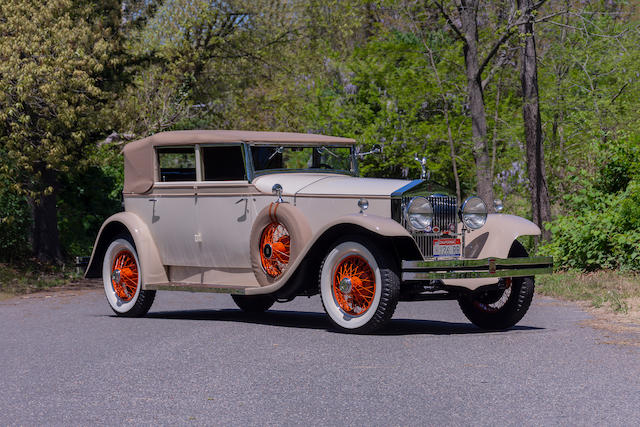




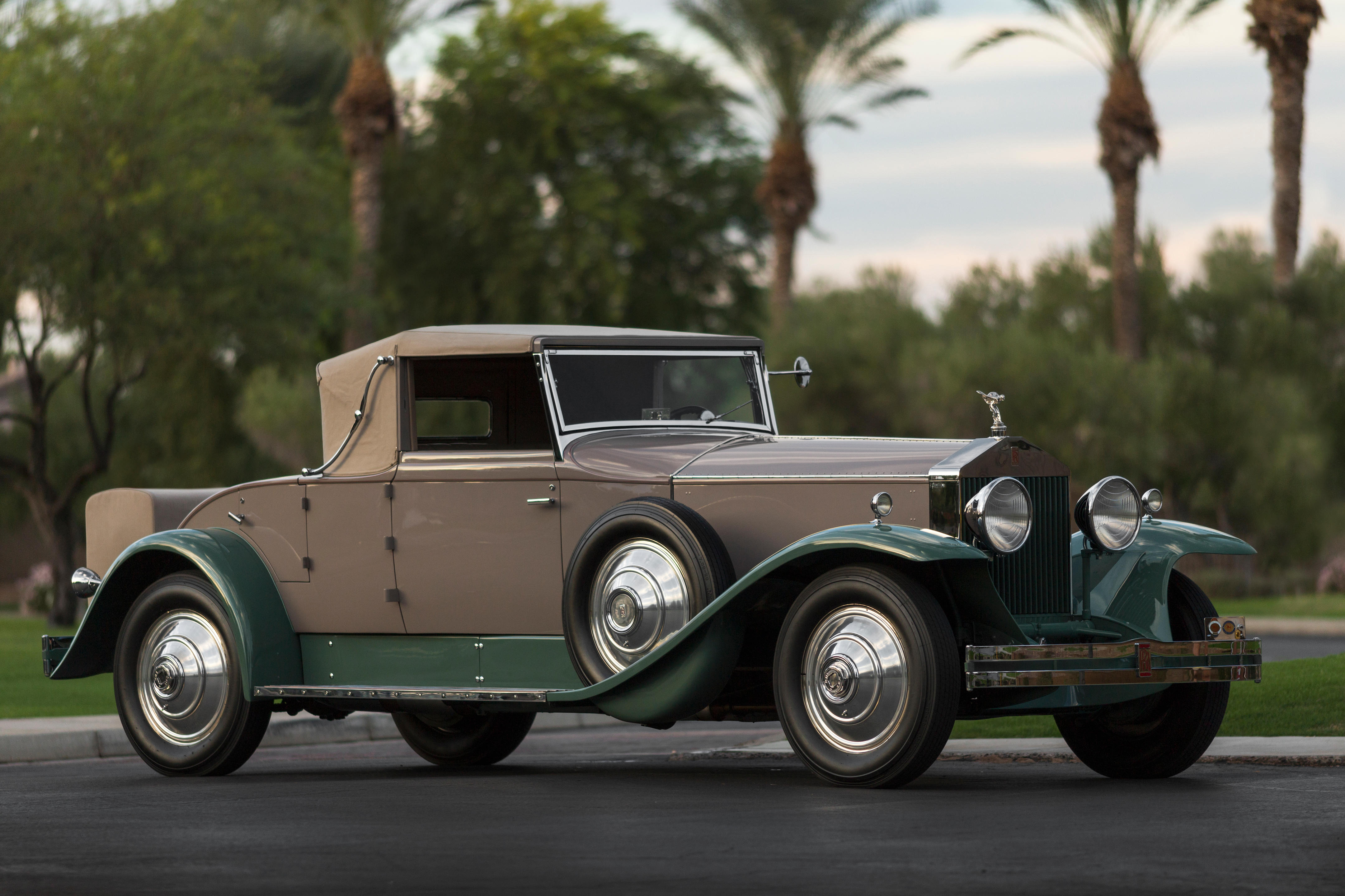

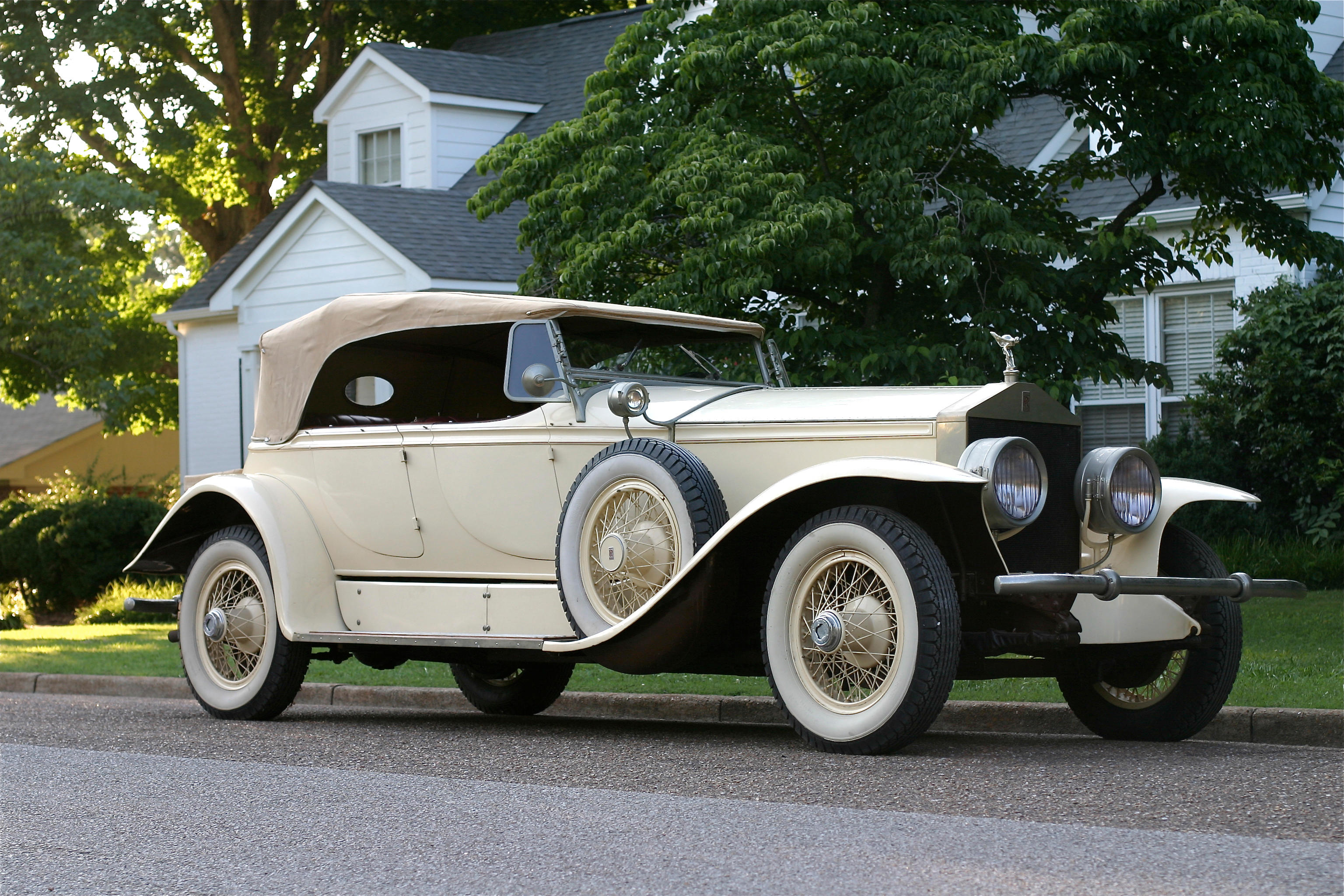
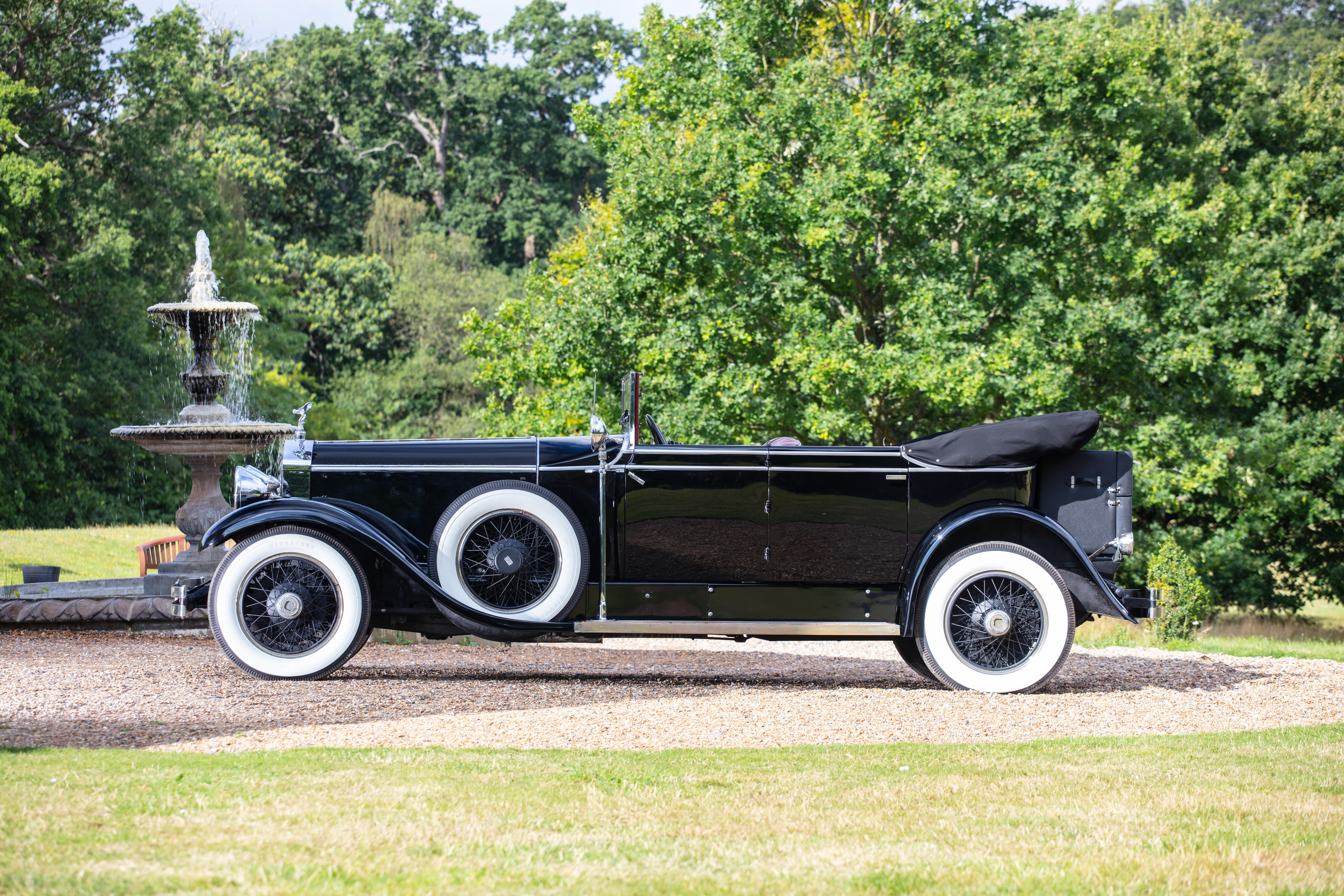
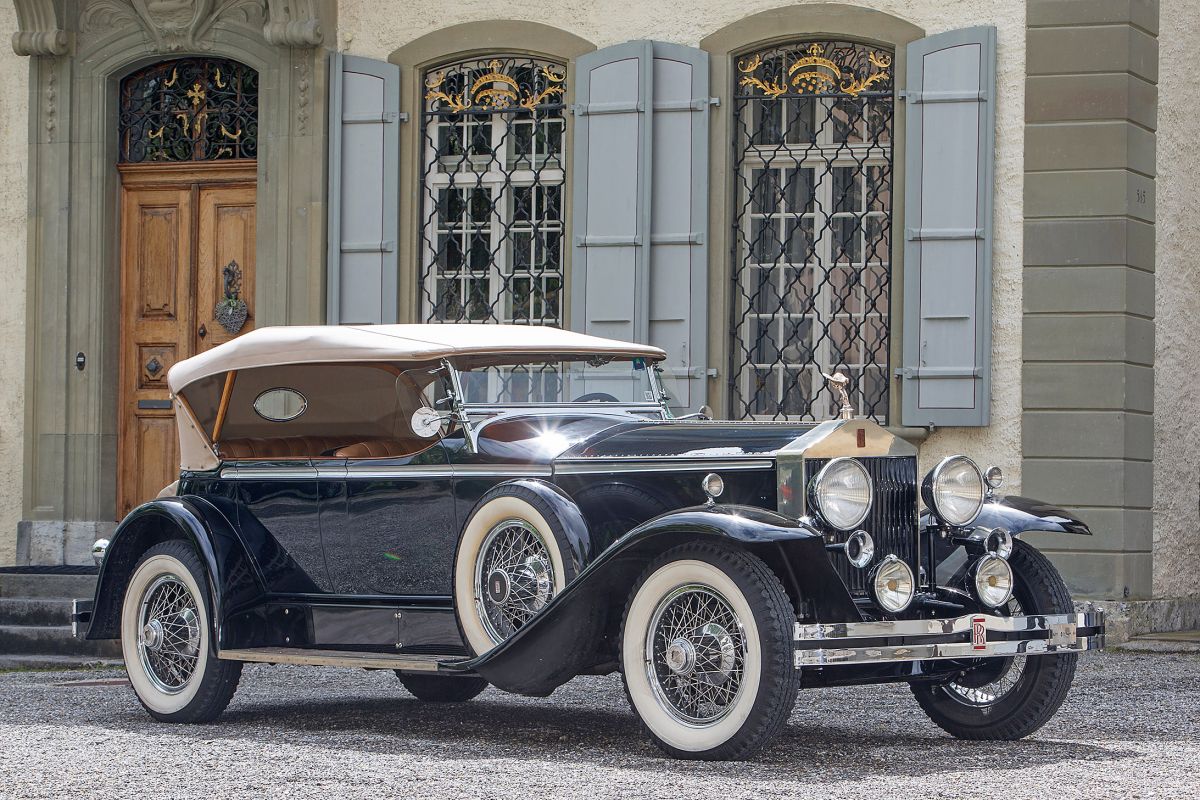

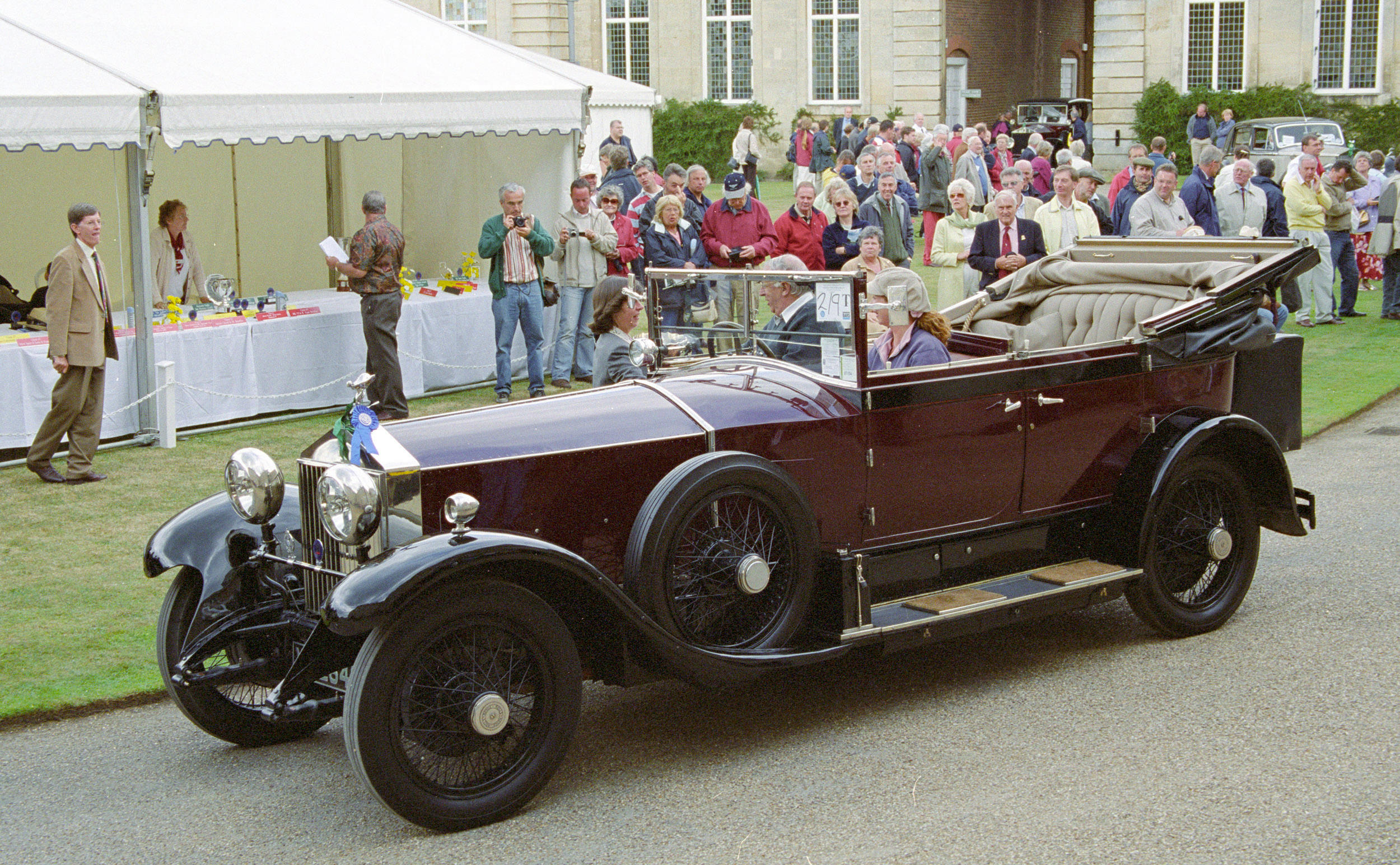
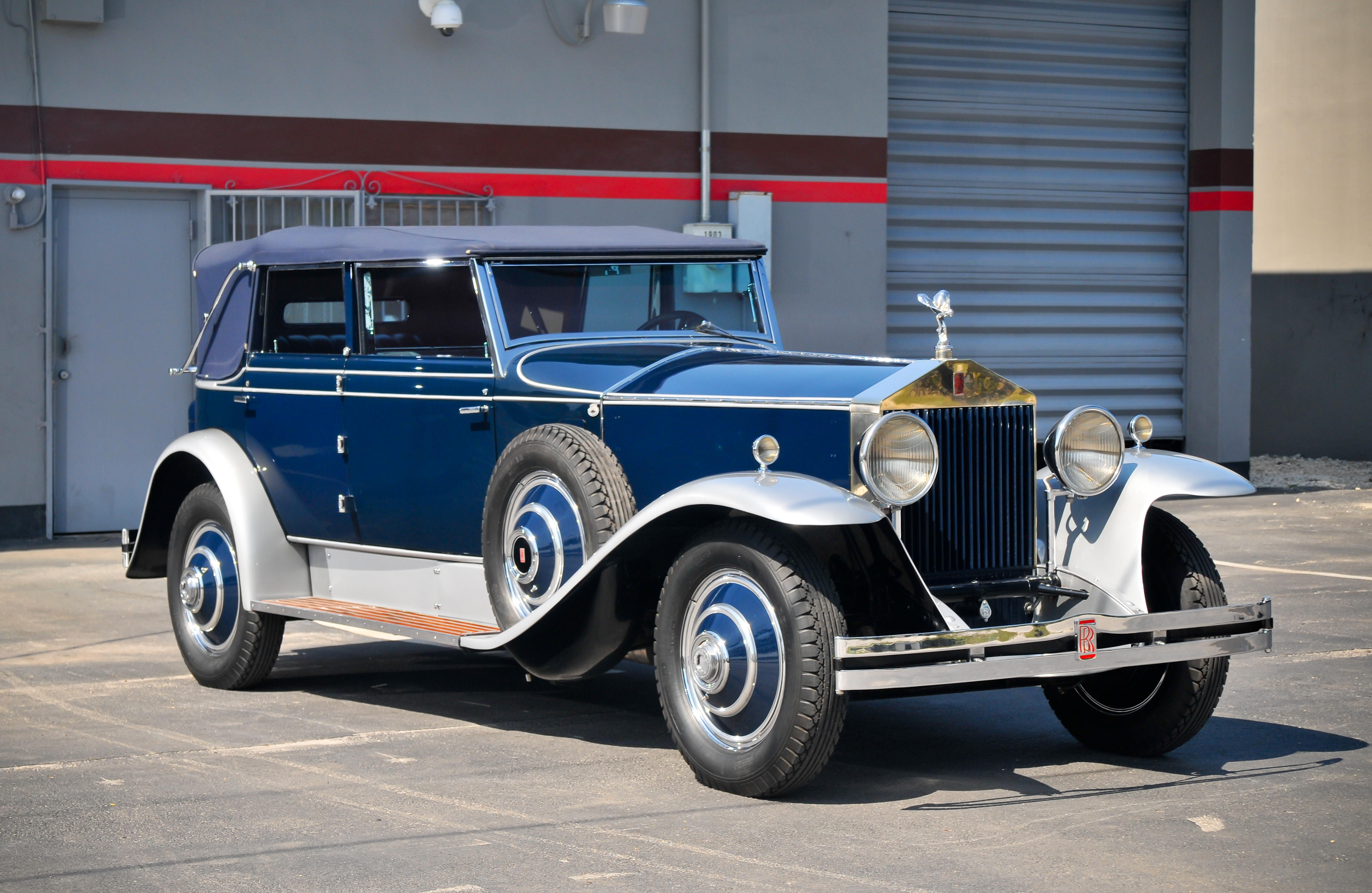
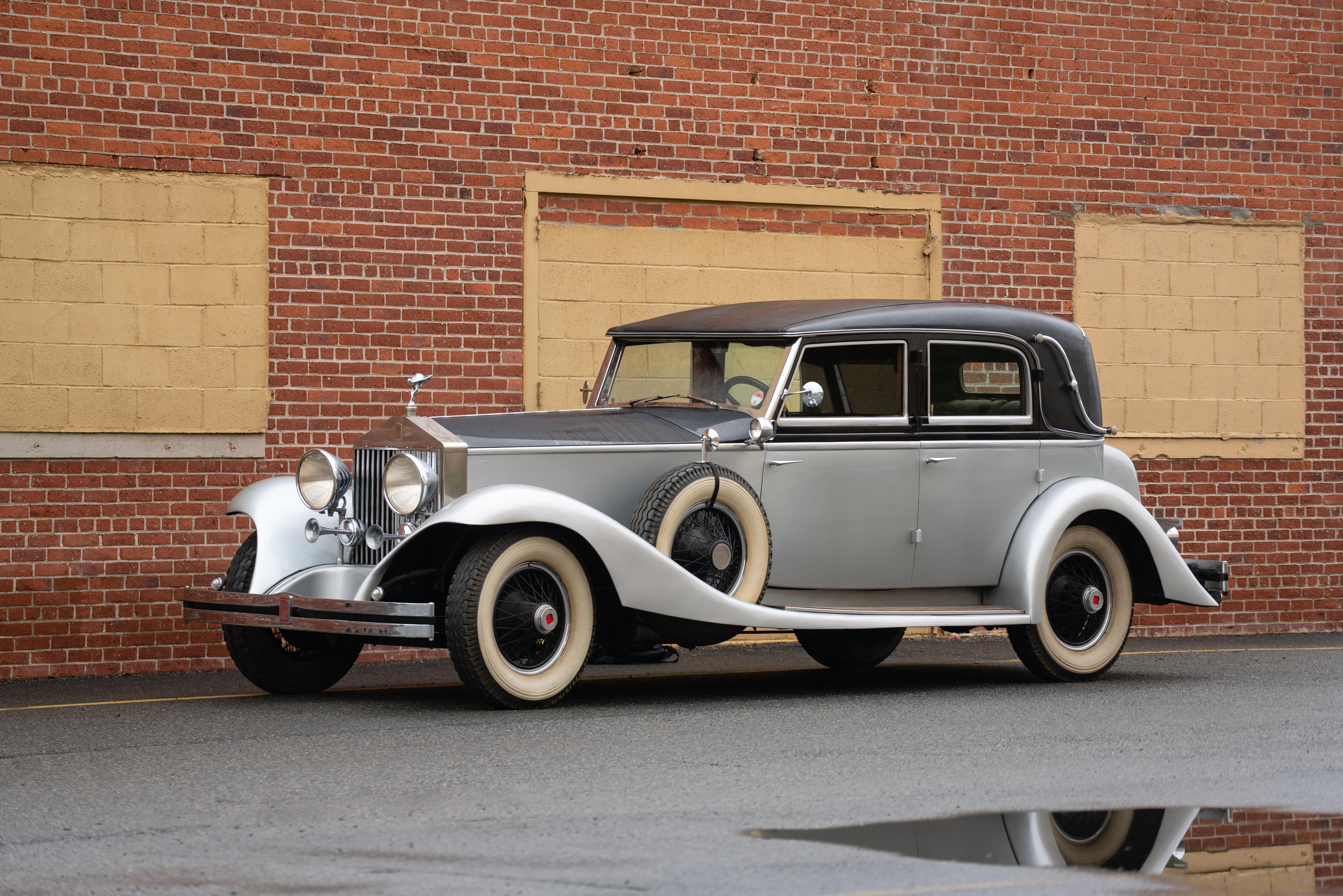

Try LotSearch and its premium features for 7 days - without any costs!
Be notified automatically about new items in upcoming auctions.
Create an alert